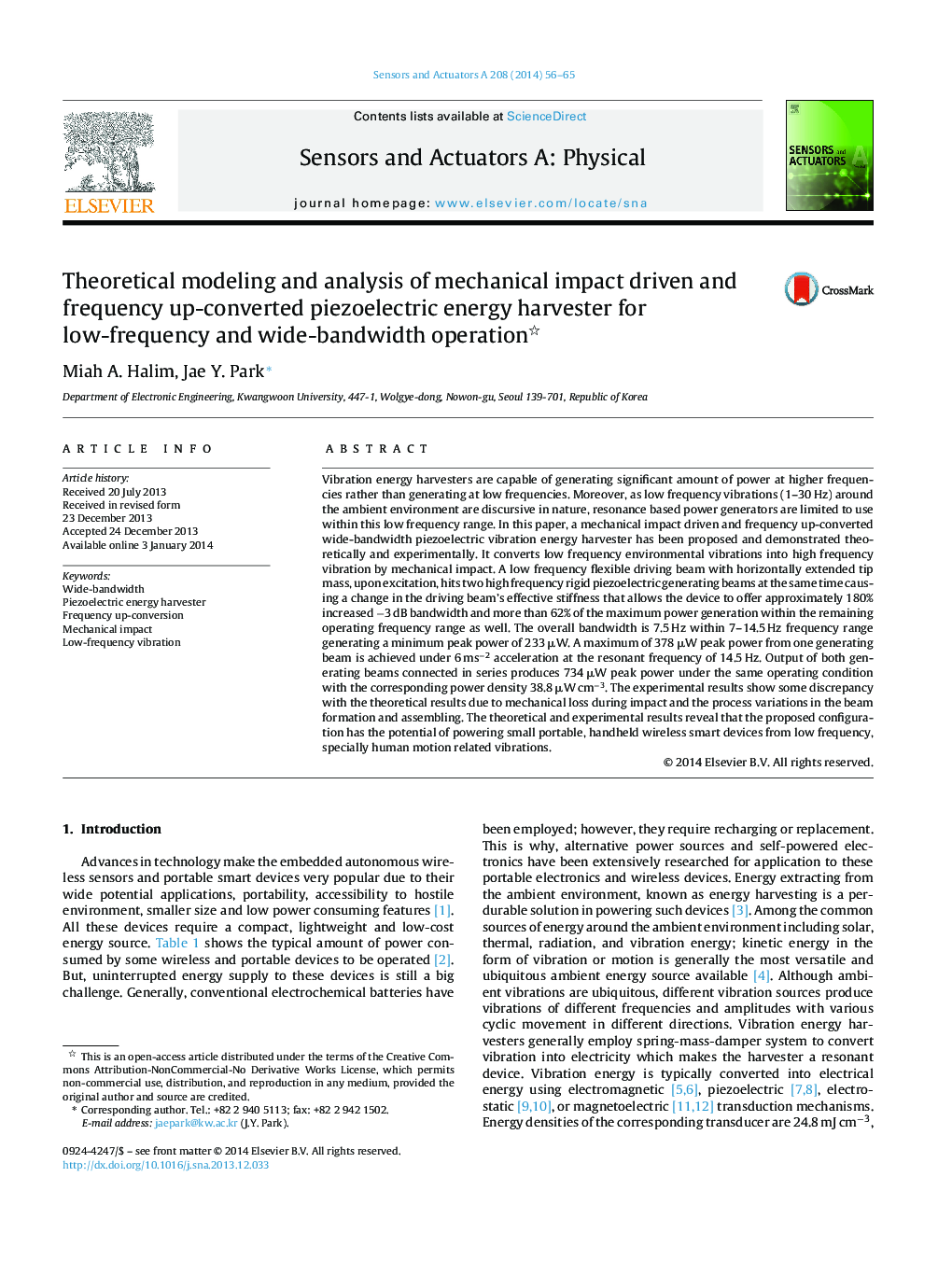| Article ID | Journal | Published Year | Pages | File Type |
|---|---|---|---|---|
| 739439 | Sensors and Actuators A: Physical | 2014 | 10 Pages |
•Analysis of an impact driven frequency up-converted piezoelectric energy harvester.•Use of two generating beams offers wide bandwidth and increases its power density.•Shows wideband operation within its entire (almost) operating frequency range.•Could be implemented through MEMS process with improved and optimized design.
Vibration energy harvesters are capable of generating significant amount of power at higher frequencies rather than generating at low frequencies. Moreover, as low frequency vibrations (1–30 Hz) around the ambient environment are discursive in nature, resonance based power generators are limited to use within this low frequency range. In this paper, a mechanical impact driven and frequency up-converted wide-bandwidth piezoelectric vibration energy harvester has been proposed and demonstrated theoretically and experimentally. It converts low frequency environmental vibrations into high frequency vibration by mechanical impact. A low frequency flexible driving beam with horizontally extended tip mass, upon excitation, hits two high frequency rigid piezoelectric generating beams at the same time causing a change in the driving beam's effective stiffness that allows the device to offer approximately 180% increased −3 dB bandwidth and more than 62% of the maximum power generation within the remaining operating frequency range as well. The overall bandwidth is 7.5 Hz within 7–14.5 Hz frequency range generating a minimum peak power of 233 μW. A maximum of 378 μW peak power from one generating beam is achieved under 6 ms−2 acceleration at the resonant frequency of 14.5 Hz. Output of both generating beams connected in series produces 734 μW peak power under the same operating condition with the corresponding power density 38.8 μW cm−3. The experimental results show some discrepancy with the theoretical results due to mechanical loss during impact and the process variations in the beam formation and assembling. The theoretical and experimental results reveal that the proposed configuration has the potential of powering small portable, handheld wireless smart devices from low frequency, specially human motion related vibrations.
